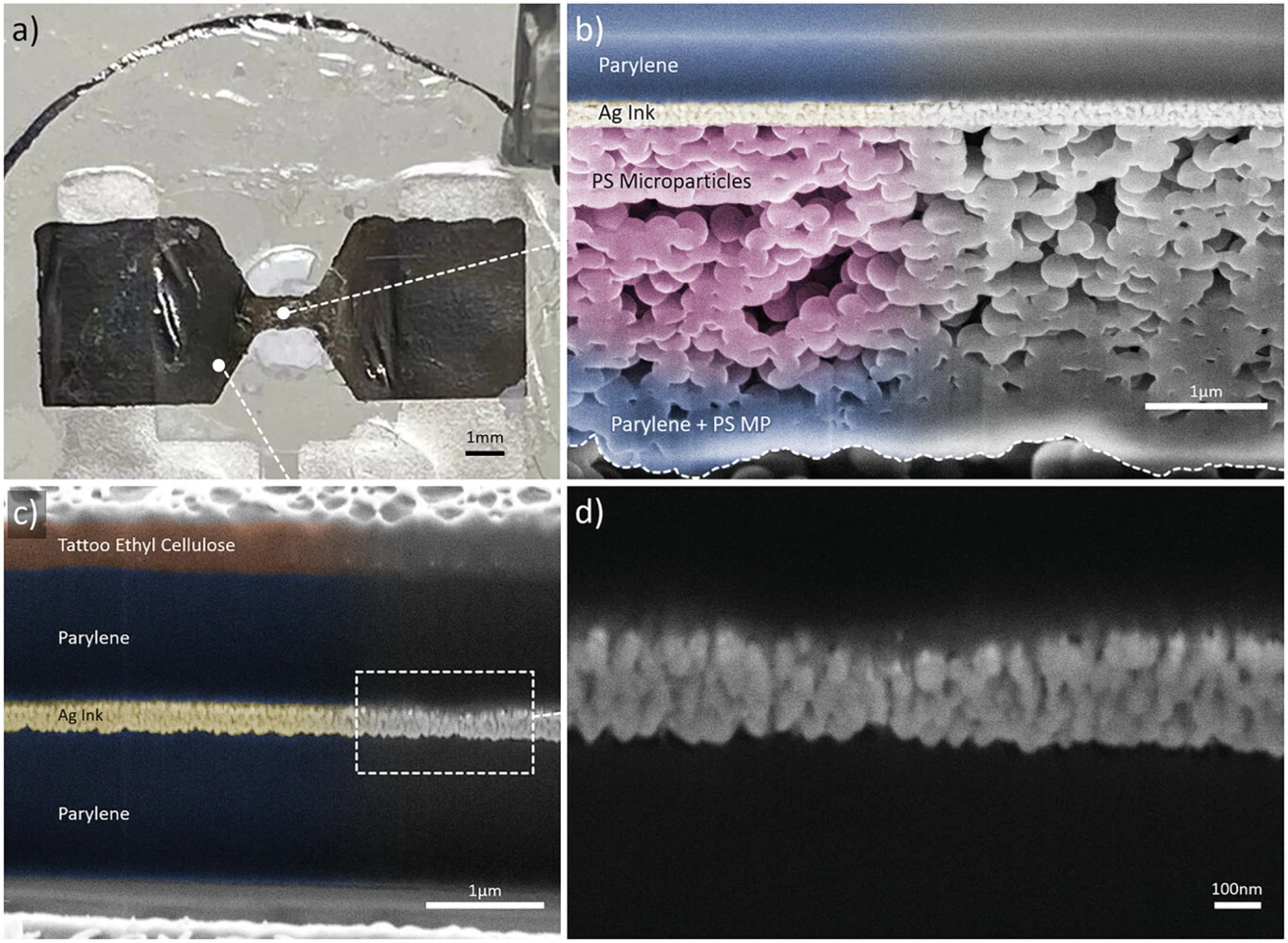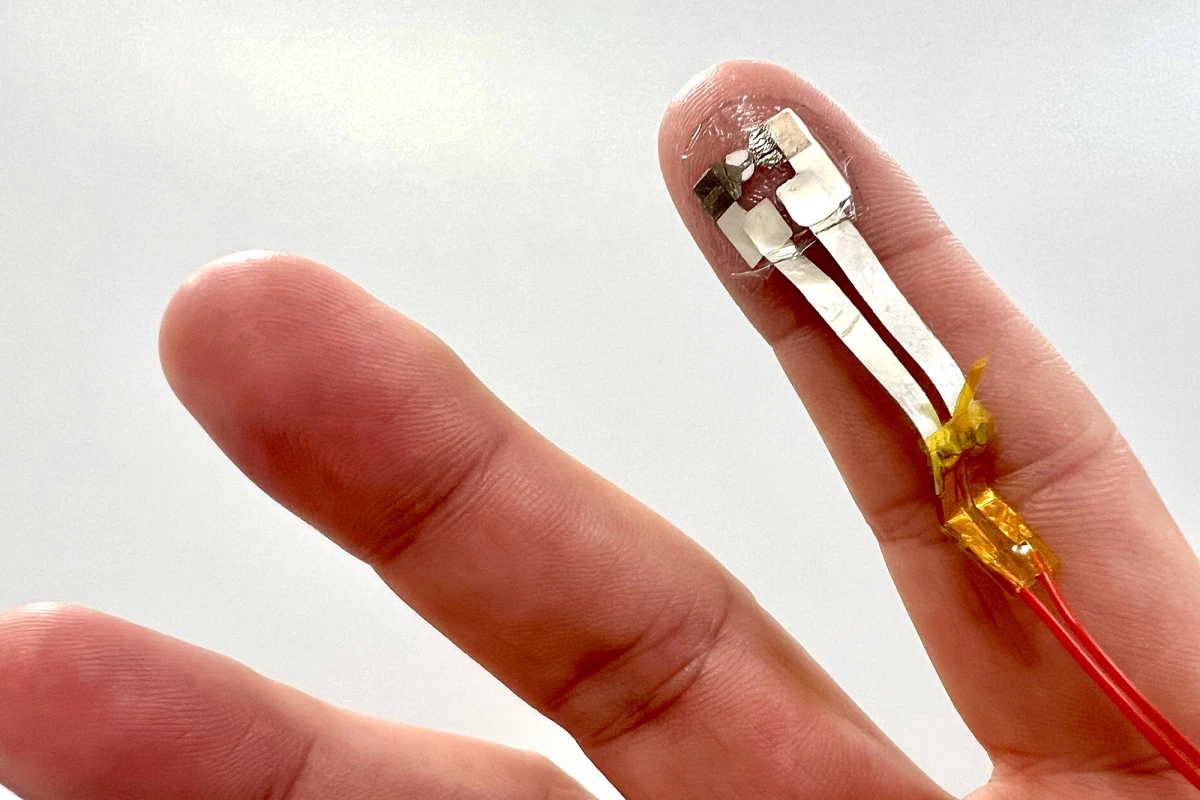Researchers have developed an ultrathin electronic tattoo capable of reproducing the localized sensation of touch in its wearer. The device has the potential to be used to manufacture lightweight, portable haptic displays and devices for healthcare and robotics.
The sense of touch is essential for grasping and manipulating objects, experiencing the world, and enabling communication between machines and humans. Replicating tactile sensation via wearable devices would have multiple important uses, such as providing feedback to an amputee’s robotic arm or information to visually impaired people, as well as uses in virtual reality and gaming.
Researchers at the Istituto Italiano di Tecnologia (IIT), Italy, have developed an ultrathin wearable electronic tattoo capable of providing localized tactile sensations through thermal, electrical and mechanical stimulation.
They chose temporary transfer tattoo paper as a substrate for the fabrication of their device because it enabled efficient transfer to non-planar surfaces and allowed the production of conformable electrodes and electric paths that adhere well to human skin.
The tattoo paper was coated with a 1-micrometer-thick parylene layer for mechanical strength, and then ultrathin films of conductive silver ink were printed directly onto it. Wiring was added, followed by polystyrene microparticles that create tiny empty spaces designed to trap air, with another layer of parylene on top.

The device, which is a few micrometers thick all up, works by electro-thermo-pneumatic stimulation. Fast and very localized electrical heating creates a small volume of air enclosed between the two parylene layers. As it expands, the air generates forces that can be felt by the skin contacting the device.
After testing their completed device on a glass slide, the researchers placed their electronic tattoo on a human fingertip to prove its capability of eliciting tactile sensations. The subject felt nine out of 10 stimulations and reported no pain or temperature increase during the tests. Moreover, the device was powered using a very small battery at low voltages (less than 300 mW), making it safe for the wearer.
The work demonstrated the functioning of a single taxel or TActile pixel, a sensor that recognizes the pressure of contact with a physical object. The researchers are working on developing larger tactile displays incorporating several taxels that can be activated independently of one another, which would allow the reproduction of letters, numbers and patterns on the skin.
“In this work, we focused on the development and characterization of a single taxel,” the researchers said. “However, the approach, the materials and the fabrication techniques could be extended to the realization of more complex devices, such as larger tattooable tactile displays.”
They think their approach has the potential to be used to develop lightweight, portable haptic displays and devices.
The study was published in the journal Advanced Electronic Materials.
Source: IIT






